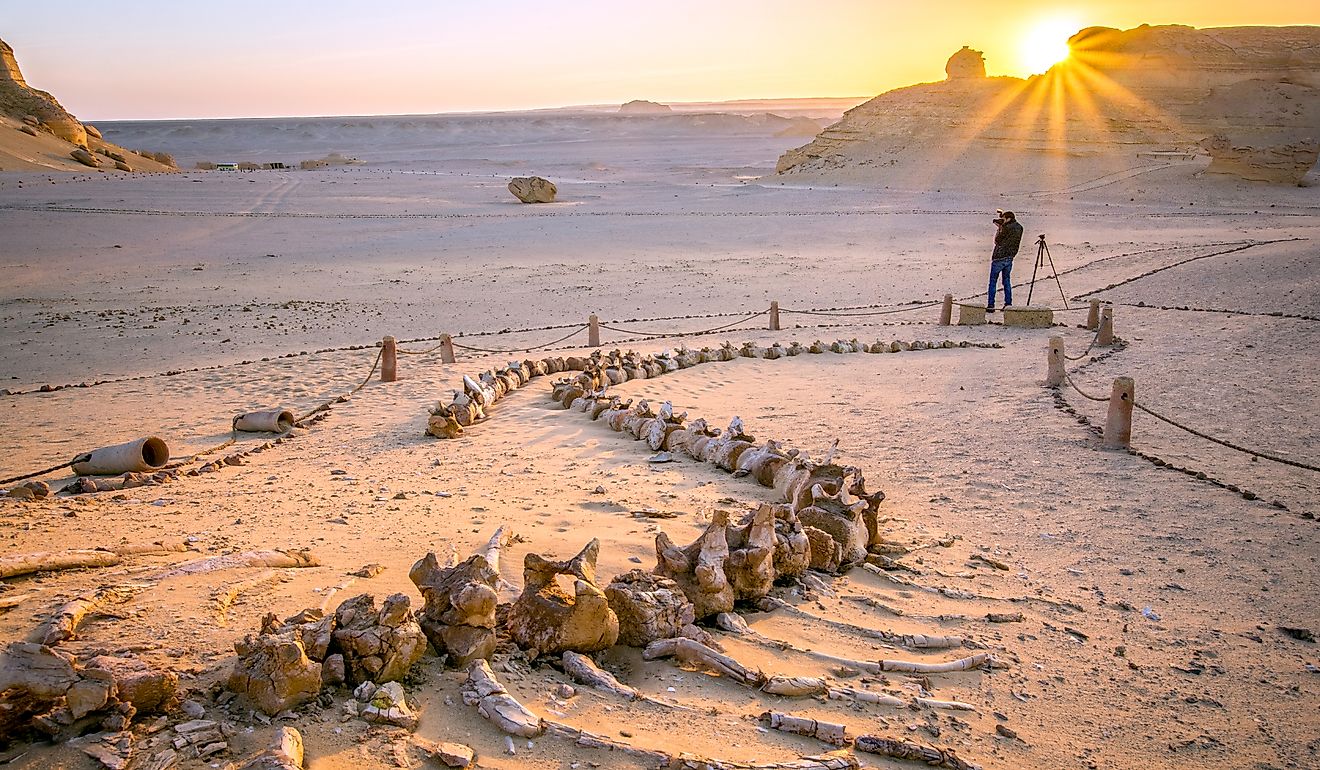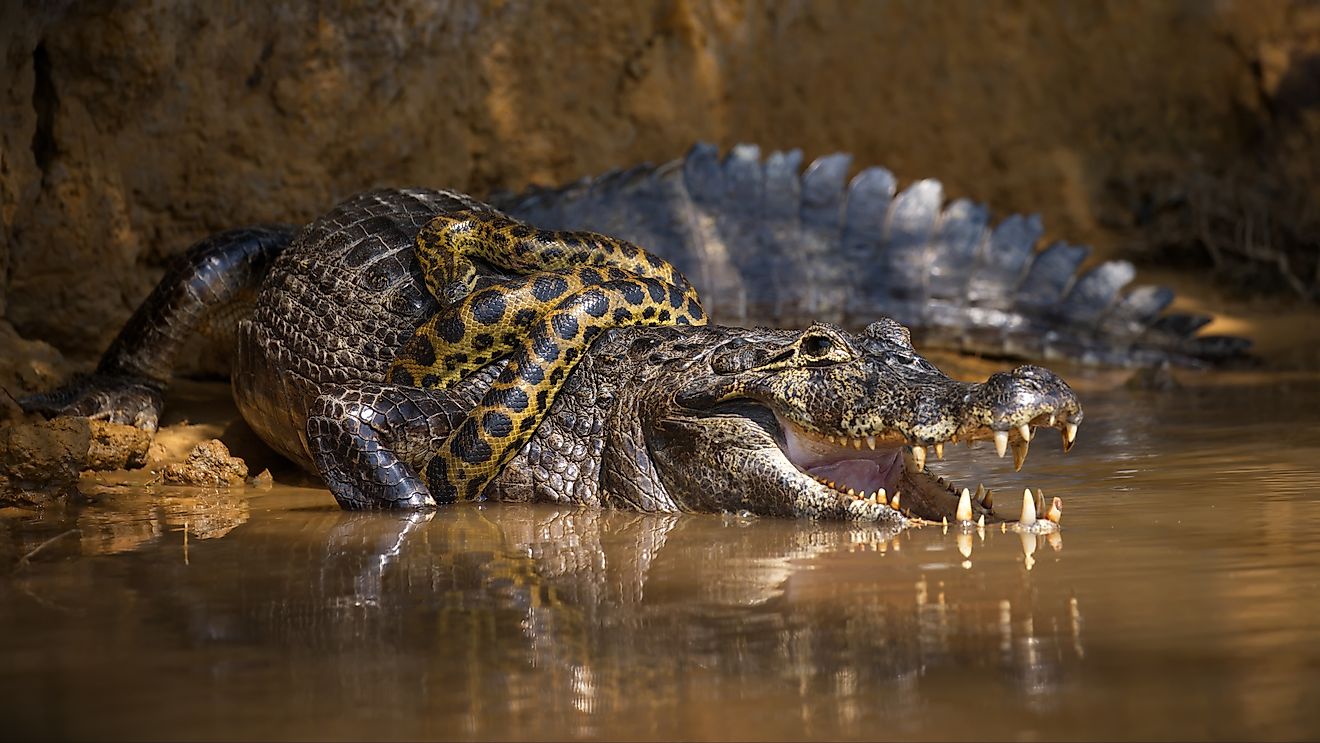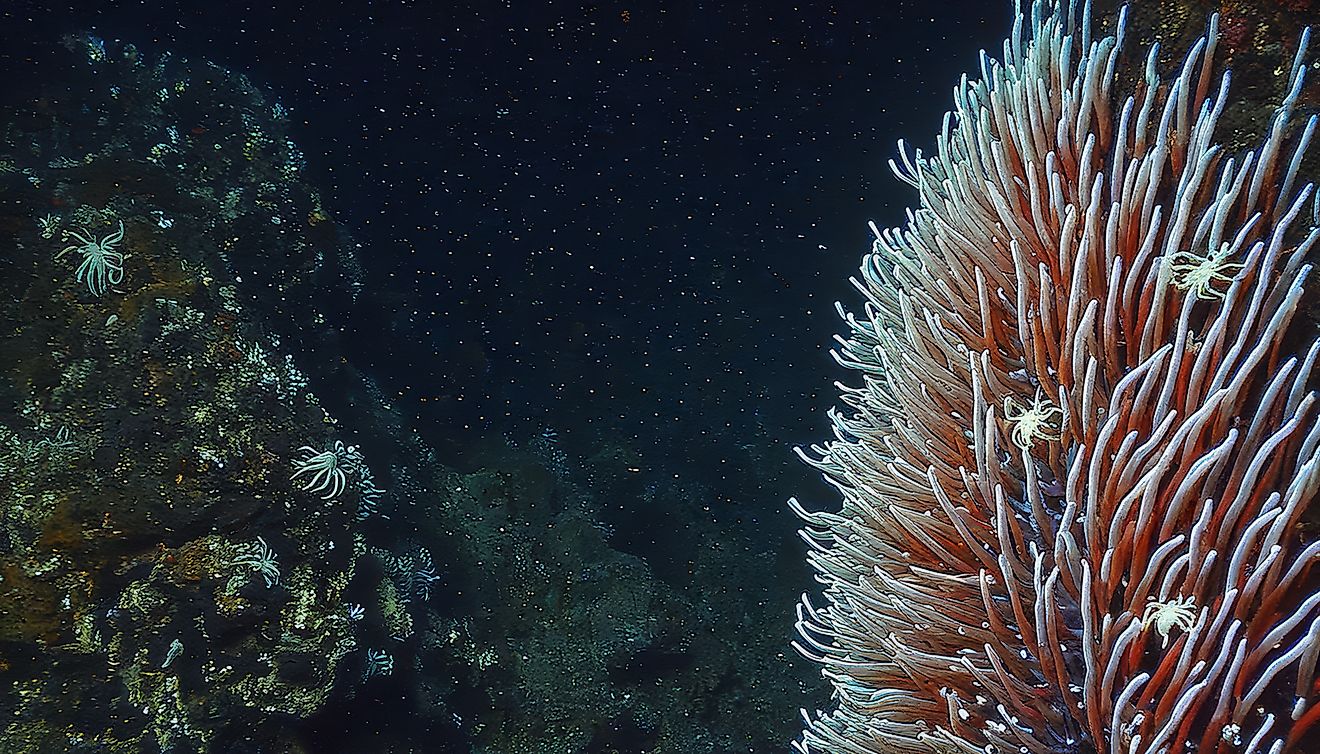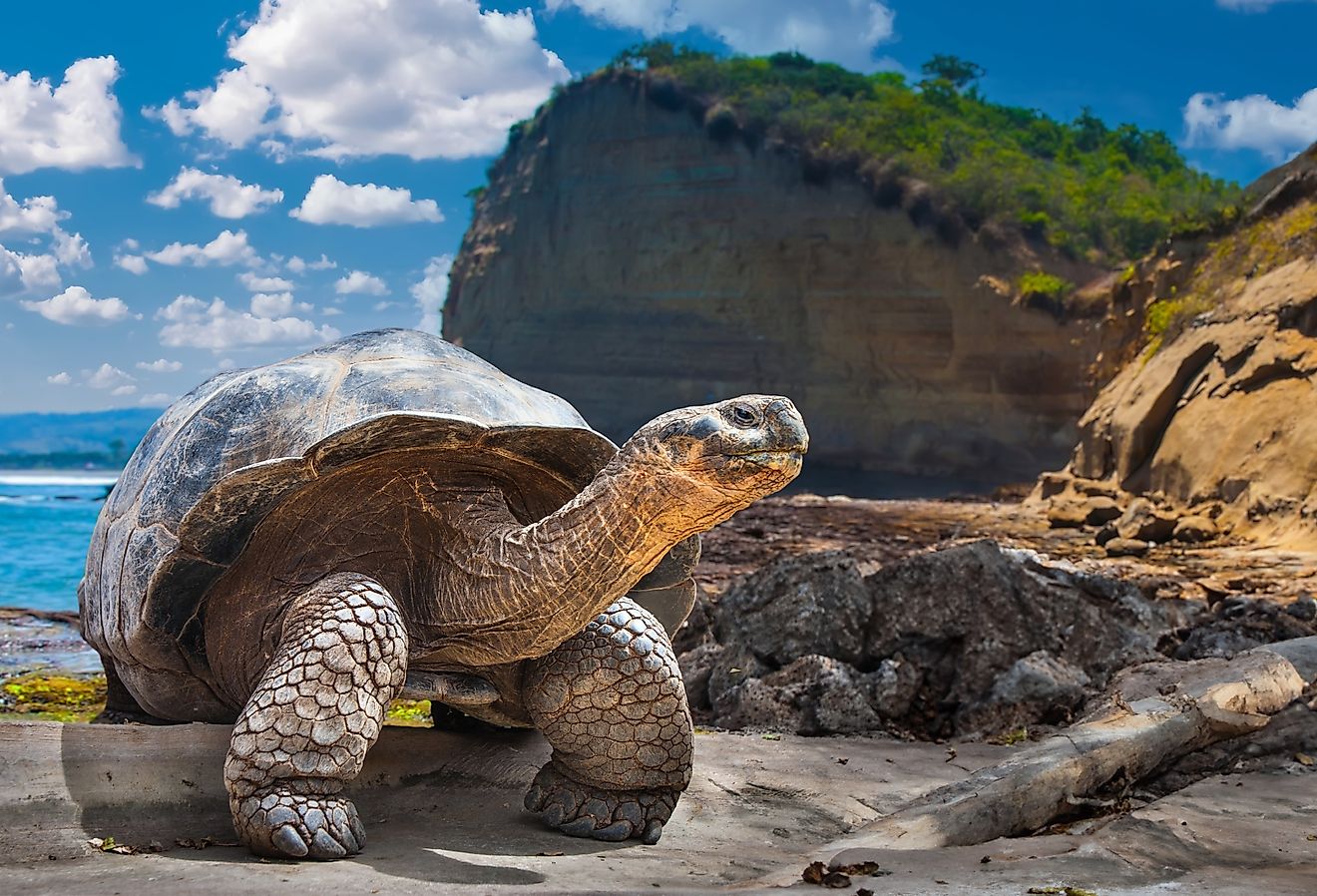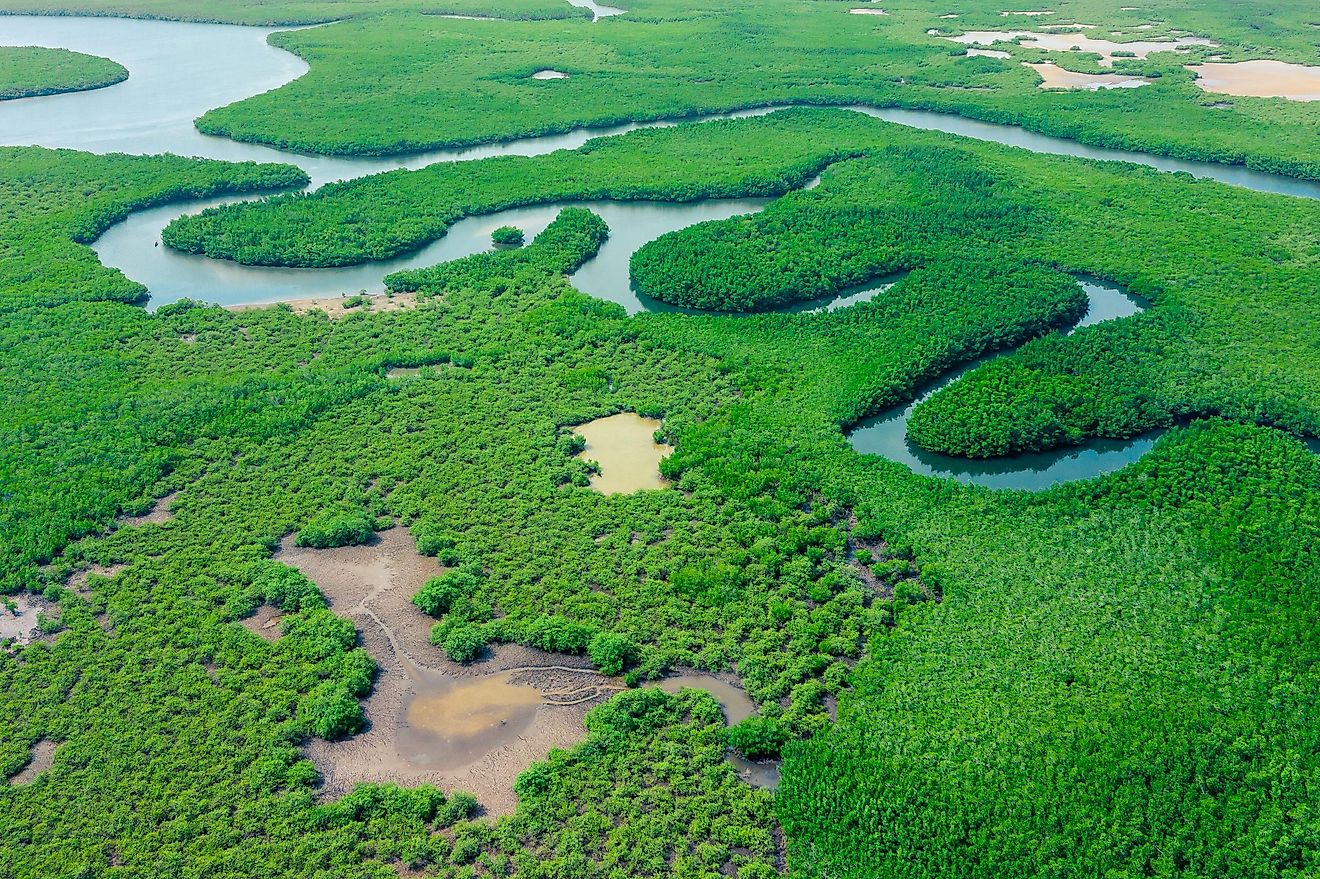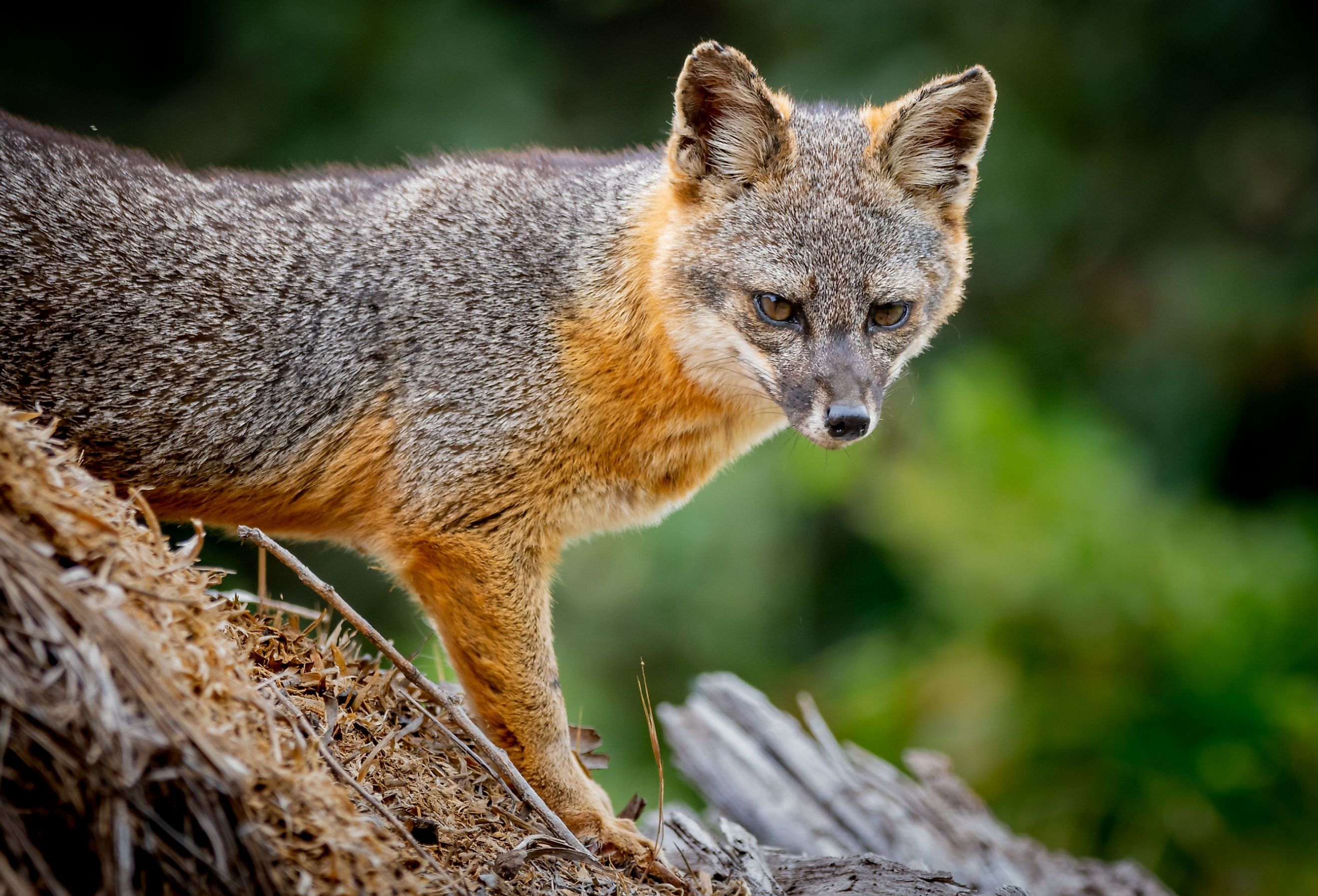
The 11 Most Beautiful Wild Animals In California
You know what they say: beauty is in the eye of the bee-holder (or perhaps bird-watcher, ursine-enthusiast, or geeky hepatologist). Either way, the size of the animal kingdom throughout California is staggering, and a lengthy debate could therefore be had over which are the most attention-grabbing, either in aesthetic, backstory, or both. Though some would-be contenders have been lost to time, many have also been saved from extinction, thanks to California's conservation mentality. Look to the sky, mountains, deserts, forests, and the ocean to select eleven of the most beautiful wild animals the Golden State offers.
California Quail
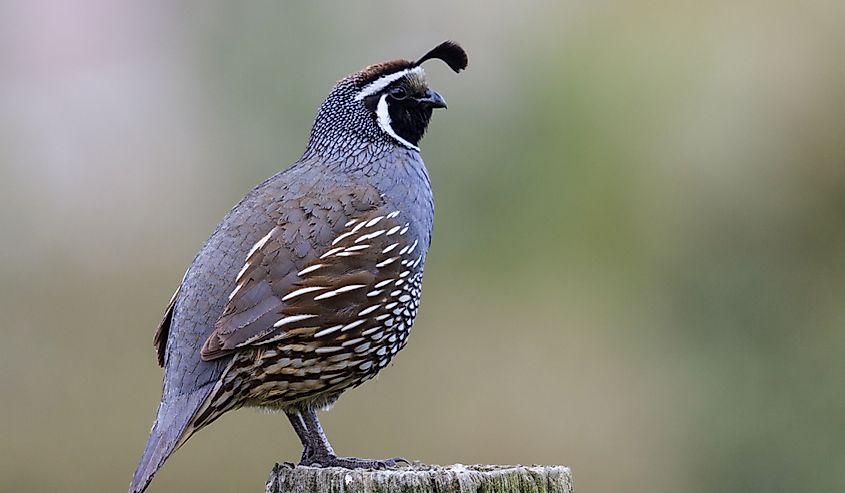
This small, plump, and decorated character is the official state bird of California. The male has the more eye-catching plumage of the two sexes – exuding a black and white scale pattern on its belly that contrasts the rest of the chestnut-brown and rich-gray body. It also has black and white stripes on its head, topped with the characteristic comma-shaped black crest. The female has more subdued coloring and a smaller crest. California Quail can be found throughout California and other parts of the Pacific Northwest, in forest foothills, oak woodlands, sagebrush, and chaparral environments, and city parks and home gardens. They prefer to walk, foraging for food in the mornings and evenings, but are capable of flying in short bursts in search of cover (i.e. the moment that hunters look to capitalize on).
Pacific Leatherback Sea Turtle
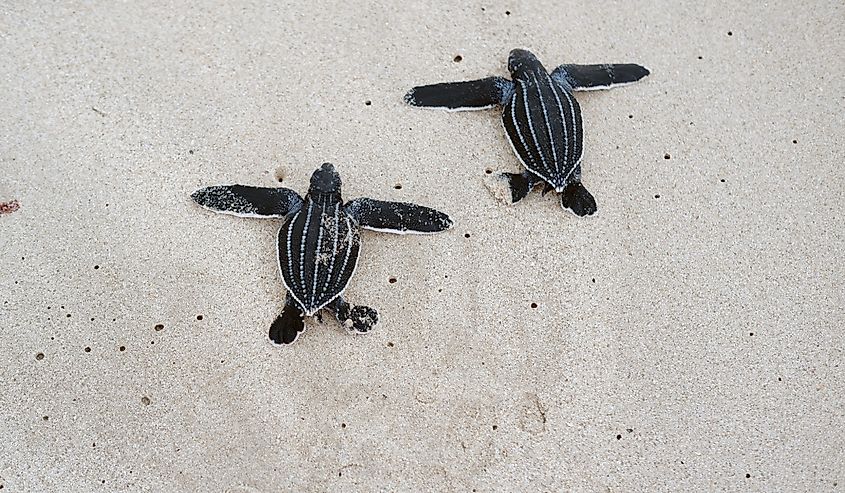
Leatherback sea turtles are the largest sea turtle species – able to grow between 55 and 63 inches in length and weigh anywhere from 600 to 1500 pounds. They lack the hard shell commonly found in other turtles, instead sporting a leathery covering from which it derives its name. Leatherbacks also undertake the longest migrations of their genus – crossing both the Atlantic or in this case, the Pacific (depending on the subspecies). The Pacific leatherback sea turtle swims from the Coral Triangle (having nested on the beaches of Indonesia and the Solomon Islands) to California – a staggering distance of 6,000 miles – to feast on jellyfish. Tragically, a member of this critically endangered species drowned just a few days ago (as of the writing of this article) after becoming entangled in commercial crab-fishing gear near the Farallon Islands. California-based populations of these sea turtles have plunged 90% in the past three decades.
Bobcat
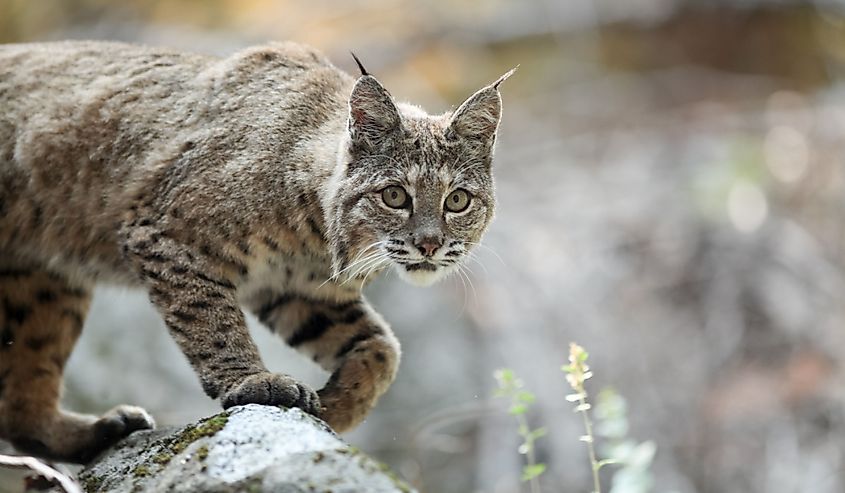
Bobcats (Lynx rufus) may be cuddly-looking but are highly skilled and elusive hunters. Though the smallest of the four species of lynx (which includes the Canadian lynx, Iberian lynx, and the Eurasian lynx), these beautiful creatures are still about twice the size of a common house cat. They possess a short or bobbed tail (after which it takes its name) with a black tip and a white underside. Compared to their cousins, bobcats also have smaller tufts on their ears, and because they have adapted to the warmer climates throughout North America, they have thinner coats and smaller paws. Regarding broader coloration, bobcats can range from gray to reddish-brown, punctuated by dark spots and a white belly. And while the bobcat is the most common wildcat on the continent, it is rarely seen in its natural habitat.
Cougar
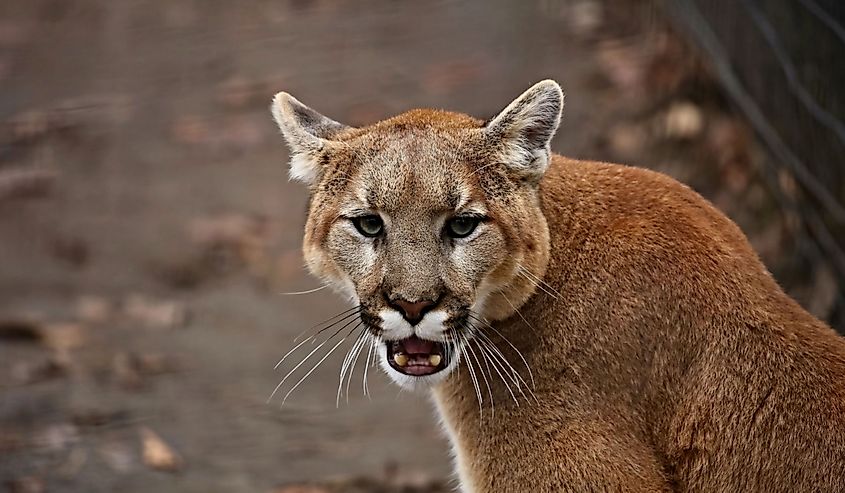
Continuing the exploration of wild Californian cats, the stunning (both in terms of beauty and intimidation factor) cougar (Puma concolor), also known as mountain lion or puma, deserves recognition. This hefty carnivore is found throughout much of the Americas (boasting the most significant geographical range of any Western Hemisphere land mammal), but in the United States, has primarily retreated to the West (note: the endangered Florida panther, a subspecies of the cougar, is a notable exception). Weighing upwards of 141 pounds, the cougar is considered one of the world's "big cats," a category shared with lions, tigers, leopards, cheetahs, and jaguars." To sustain their powerful bodies, cougars rely on a diet primarily consisting of deer and smaller animals as the need and opportunity arises.
Gray Whale
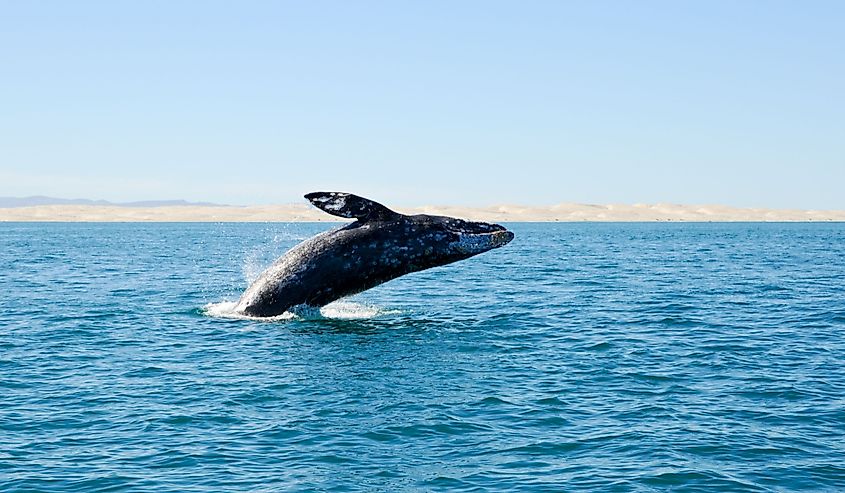
The gray whale (Eschrichtius robustus) is one of many extraordinary seafaring mammals gracing California's coast. Still, this baleen species is more commonly seen and interacted with; therefore, it is one of the easiest to appreciate in terms of its beauty. Though once driven to near extinction during the whaling epoch of the 17th to 20th century, gray whales are now classified as "Least Concern" on the IUCN Red List. Each winter, they migrate by the tens of thousands from the Chukchi and Bering seas to the warmer breeding grounds offered by the Baja peninsula and the Gulf of California. Many head back after just a few weeks, whereas the new mothers remain for a few months, teaching their calves to swim in the shallower and protected waters. While migrating to and fro, whale-watching tours capitalize on the fact that gray whales stay comparatively close to the shore and exhibit curiosity around small boats. Full-grown males can reach nearly 50 feet in length and weigh between 17 and 44 tons.
Great Horned Owl
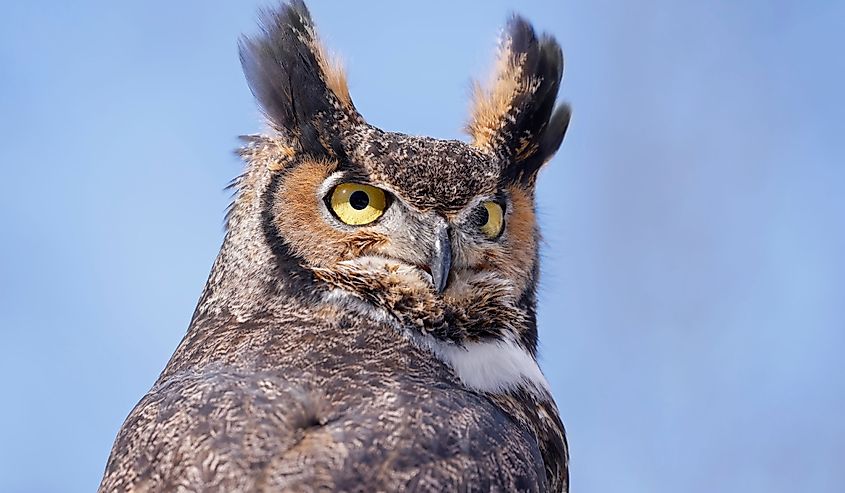
One of the classic calls of the wild comes in the form of a deep hoot projected by the great horned owl (Bubo virginianus). This stoic, striking-looking predatory bird has prominent ear-like tufts (hence the name), a stout body covered in a blend of black, white, and light-brown feathers, strong talons, and ever-watchful bulbous yellow eyes. Great horned owls can kill prey larger than themselves (crushing their spine with their relentlessly powerful talons) and even take down other raptors. They are one of the most common species of owl in North America. They are remarkably malleable regarding their habitat range (i.e., everything from deserts to forests, wetlands to grasslands, and even cities).
California Condor
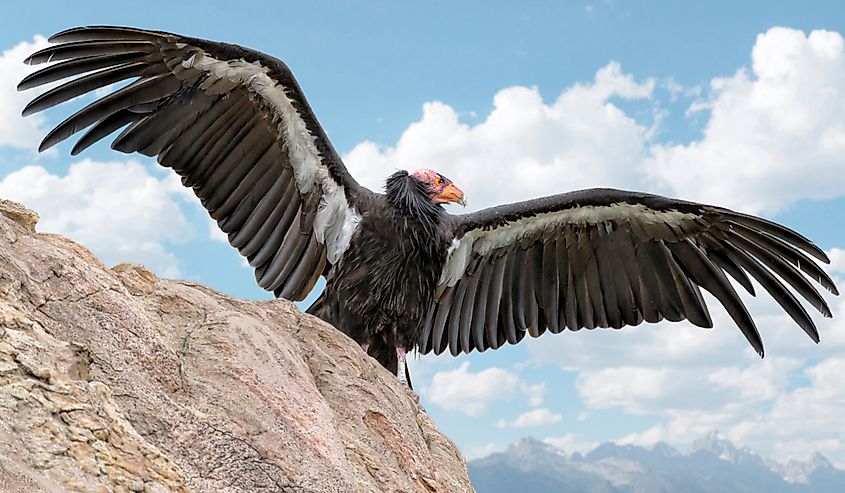
Another impressive bird of prey, the California condor (Gymnogyps californianus), has not been so lucky regarding its population trend. The giant bird in North America (weighing up to 25 pounds, with a wingspan of 9.5 feet) used to soar throughout the entire continent. Still, by 1987, there were just 27 individuals remaining (all in captivity). Thanks to a breeding and reintroduction program, there are now 275 of these vultures in the wild (split between Central California, the Four Corners region, and a bit of the Baja peninsula) and another 160 in captivity. Nonetheless, given these modest increases, there is a long battle for the California condor, especially given their susceptibility to lead poisoning when scavenging in and around polluted waterways (bald eagles face the same problem). But when all is well, these long-distance gliders can live for up to 50 years – feasting on the carcasses of large mammals and building nests in caves within high cliff faces.
Monarch Butterfly
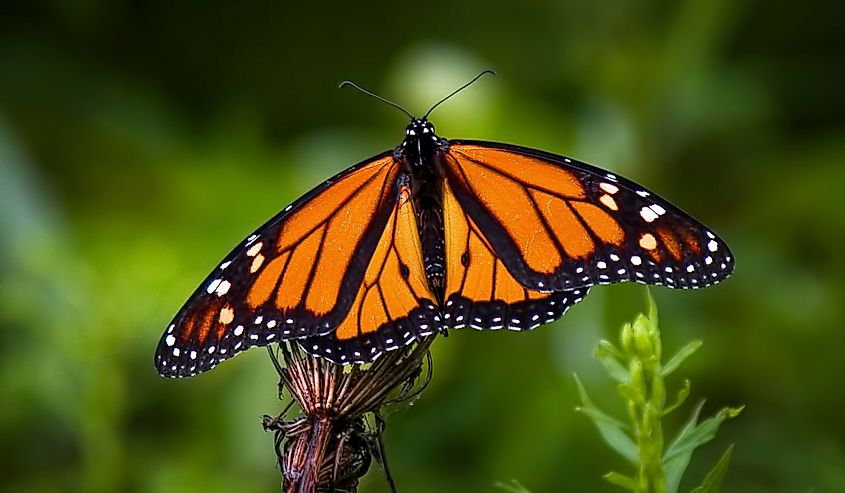
This beautiful winged creature also faces an escalating threat of extinction. The monarch butterfly (Danaus plexippus) is easily one of the world's most recognizable. The slow flapping of its large, bright-orange wings (speckled with black and white spots, filled with black lines, and framed by a thick black border) is hypnotic and astonishingly compelling for traveling long distances. Western monarch butterflies fly from California to Southern Canada each spring before returning to the South in the winter. Wherever they roam, these beautiful and gentle creatures seek out milkweeds (upon which to lay their eggs and for food). Part of the reason Western monarchs have declined by over 99% since the 1980s is because of the decline of this vital plant. Not only are butterflies valuable to the ecosystem, but their metamorphosis out of the caterpillar phase is one of the more powerful examples of how beautiful change can be.
Great Basin Collared Lizard
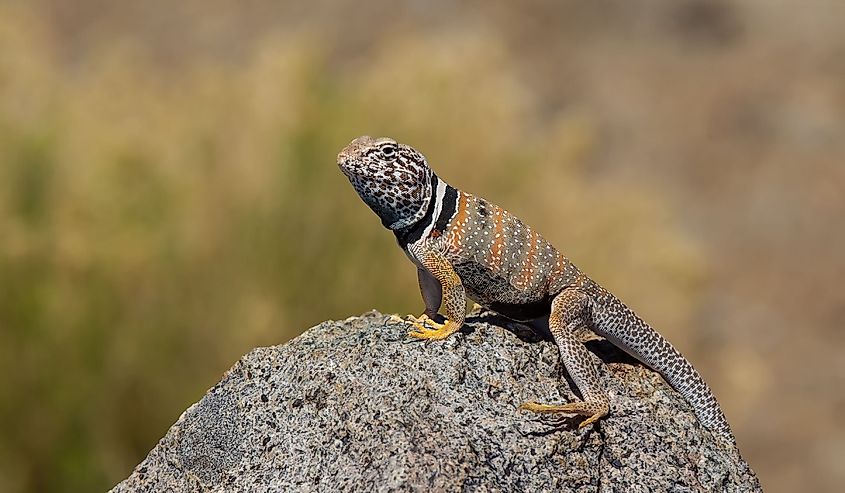
The Great Basin collared lizard (Crotaphytus bicintores) is always ready for a night on the town. Just kidding, these uniquely-patterned critters are active during the day, usually either basking on sunny rocks or foraging for insects, small lizards, snakes, leaves, and flowers. The most distinctive visual feature of this lizard is its thick Oreo collar. The rest of their body paints quite a mosaic – with a base color on the spectrum between brown and olive and a plethora of white dots and dashes, as well as brown or reddish-orange crossbands. Its belly is mostly white. In general, females are not as brightly colored. However, they develop reddish-orange spots and bars along their neck and body when breeding. The Great Basin collared lizard can be found throughout a large section of the Western United States. In California, it resides in the Great Basin Desert and a small part of the Northeast.
Black Bear
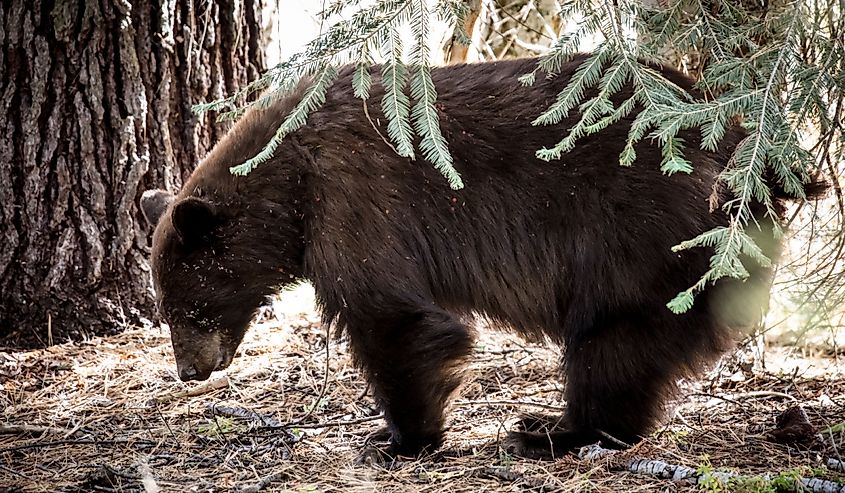
California's state flag prominently features a grizzly bear, yet no such ursines remain within its borders (a powerful reminder of the stark ways we can impact the ecosystem). Black bears (Ursus americanus), however, still exist in healthy numbers across most of North America – preferring coniferous and deciduous forests and alpine environments. Though not always black in appearance, black bears are smaller than grizzlies (though males can still exceed 600 pounds) and lack the distinctive shoulder hump. These furry and inquisitive climbers are happy to subsist on a wide range of foods, generally tilting to the vegetarian side of the omnivore spectrum, enjoying such things as berries, roots, grass, and other plants, but are also exceptionally capable predators, sometimes feasting on fish, deer, livestock, etc. If you are living, visiting, or camping in bear country, be sure to securely stow your grub and garbage. Black bears quickly become habituated and are often destroyed by authorities after frequent or problematic encounters with humans.
Island Fox
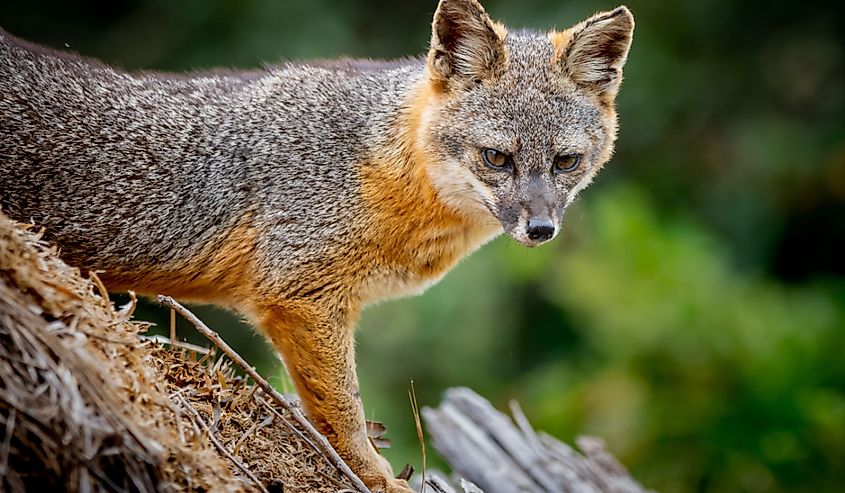
The island fox (Urocyon littoralis) is endemic to six of the eight Channel Islands in Southern California. This descendant of the mainland gray fox exists nowhere else on the planet, and even each island has produced its own physically and genetically distinct subspecies. As such, these small, friendly-looking foxes are all the more unique and beautiful for their rarity. Because the island fox (typically) has no natural predators, it is taken hunting during the daytime, whereas its mainland cousins are nocturnal. Unfortunately, it hasn't been all sunny days for this fellow. During the era of DDT-caused bald eagle population collapse, its competitor, the golden eagle, established breeding populations throughout Channel Islands National Park. Their subsequent overhunting severely reduced the number of island foxes on four islands by the late 1990s and early 2000s. Thankfully, a combination of captive breeding and reintroduction, plus the removal of golden eagles and reintroduction of bald eagles, restored equilibrium, bringing the island fox back from the brink.
The history of wildlife in California hits all the angles. There are thriving and lovable creatures who have found firm footing amidst us humans, cautionary yet inspiring tales of close calls successfully averted, and some tragic components that will hopefully stoke the flame of conservation for generations to come. These eleven beautiful wild animals give the Golden State a little extra shine. Which one is your favorite?
